Some pine for the lost era the demise of these buildings and places represented. I, however, wasn’t interested in nostalgia, a term Walker Evans once defined as the “blurry vision which destroys the actuality of the past.” I was drawn instead to documenting the “historical contemporary” and investigating these locations as components of an ever-changing commercial landscape generated by a society in flux.
Over time my work shifted as I attempted to blend a documentary and interpretive approach with a subtle formalism, trying to capture a more melancholic, alienated environment that spoke less of freedom or hope, and more about the failed expectations and promises of the American experience. I labeled this condition the “myth of mobility.” The phrase alludes to the futility of our constant striving for success and achievement, while also metaphorically suggesting that the roads we travel (and infuse with so much meaning) may eventually lead nowhere—to a landscape where “the American Dream that isn’t quite what it seems” resides.
This mobility myth—and the belief that there’s always something better down the road—has been a master narrative in the American psyche since the country’s inception. In the nineteenth century, Western exploration and discovery became the fuel igniting this myth, which in turn led to massive migration and a growing American hunger for adventure, happiness, and better circumstances. Not much has changed, character-wise, over the last century and a half. Even faced with having to pay sixty dollars to fill up, and the increasing environmental problems proving that cars are killing the planet, we still pursue our goals without hesitation. The highway and all it connotes remains a central metaphor with staying power even as the oil runs out.
The symbolic relevance of earlier road narratives continues to strike a generational chord, too. In that collective past we remember Steinbeck’s Joad family as they left the Dust Bowl of Oklahoma seeking salvation and greater opportunity in California, with Route 66 providing the means to do so. Kerouac hit the road for other reasons in the 1950s: to find himself in the course of a meandering voyage of self-discovery; it was a rootlessness disguised as freedom. Films from the 1970s like Two-Lane Blacktop and Vanishing Point depicted existential road trips to nowhere. Songwriters and poets recognize the different potential outcomes for human beings when they talk of either the “road to ruin” or the “highway to heaven.” Bruce Springsteen’s music in particular—with its many road references symbolizing escape, freedom, loneliness, and the darker side of the American Dream, particularly on his album Nebraska—has been a chief influence. I’ve spent many nights in deserted locations seeking to construct a visual equivalent of an obsessive movement that suggests arrival but rarely delivers us to our destination.
Jeff Brouws
Highway Landscape
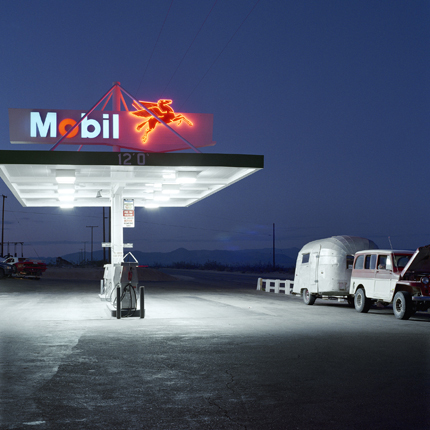
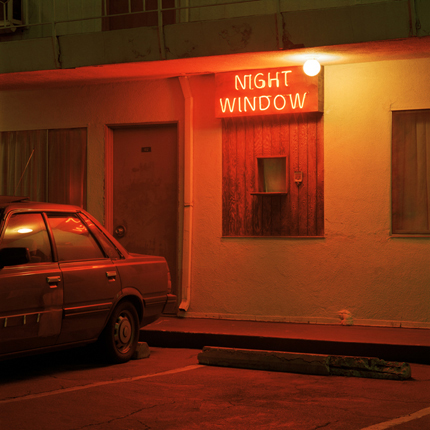
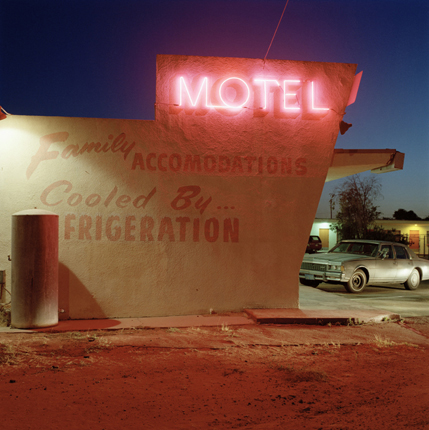
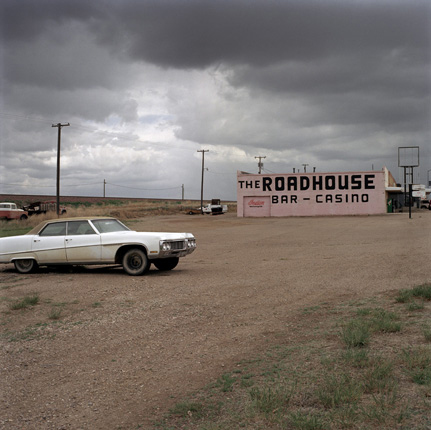
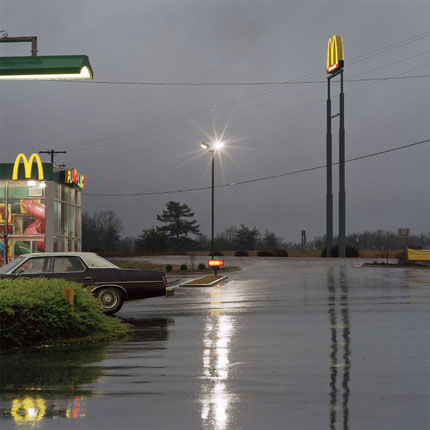

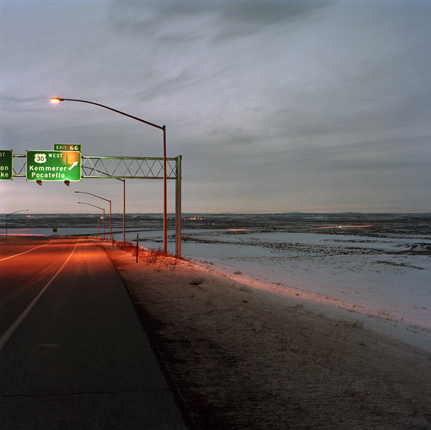

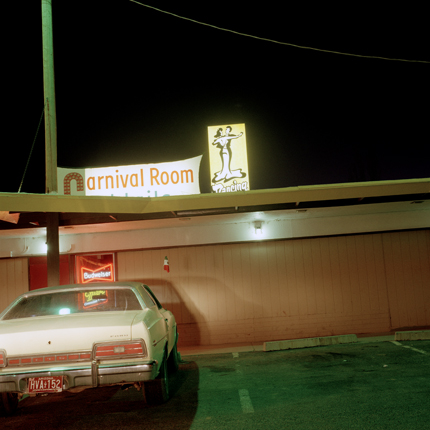
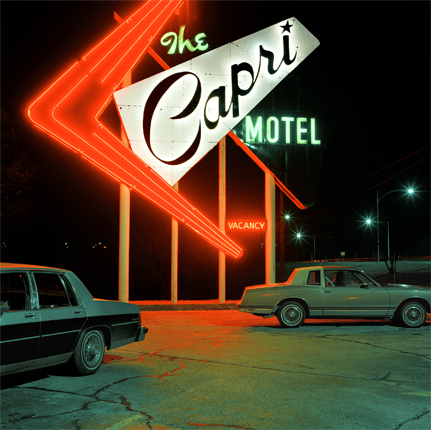
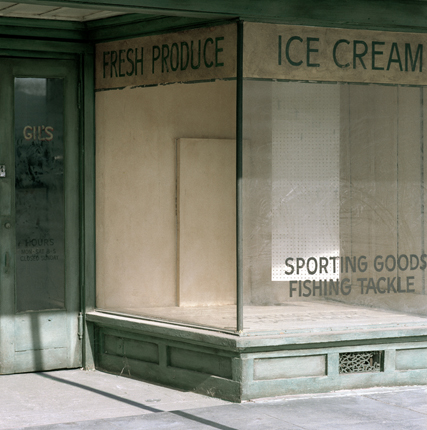
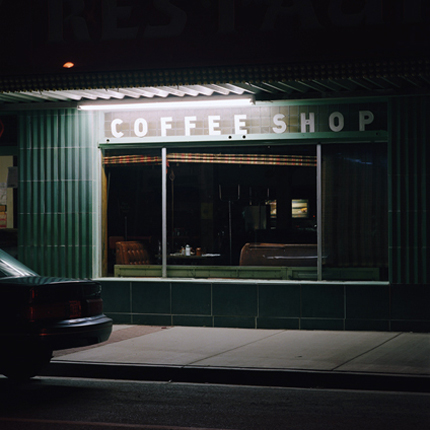
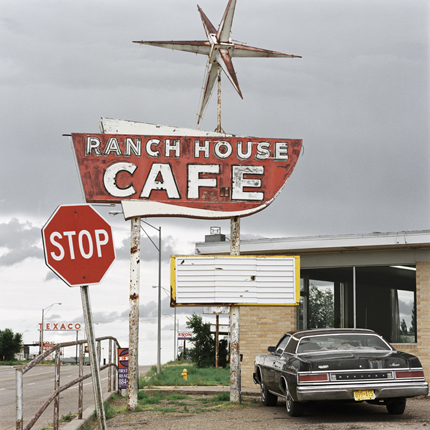
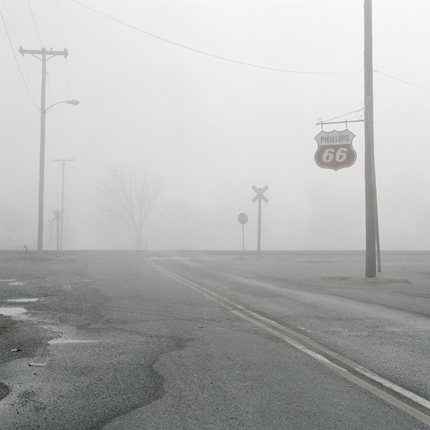

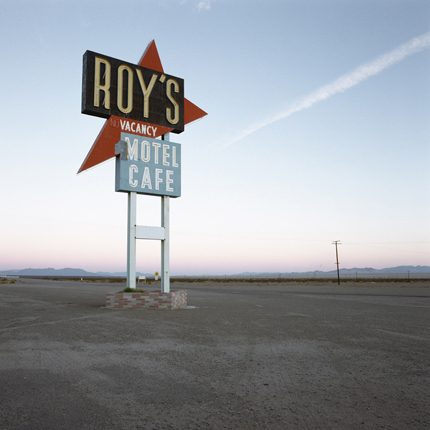
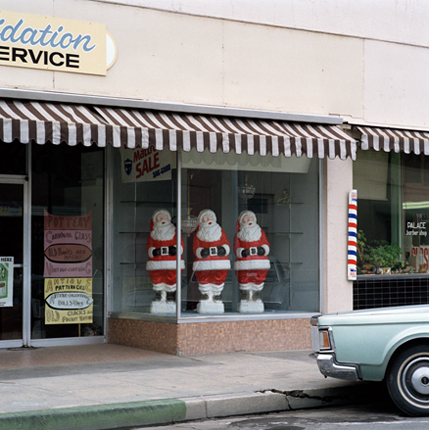
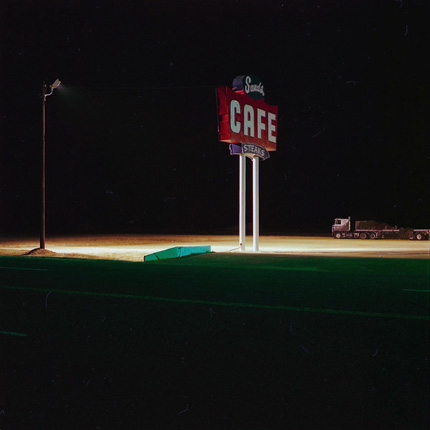
All images © courtesy of Jeff Brouws
